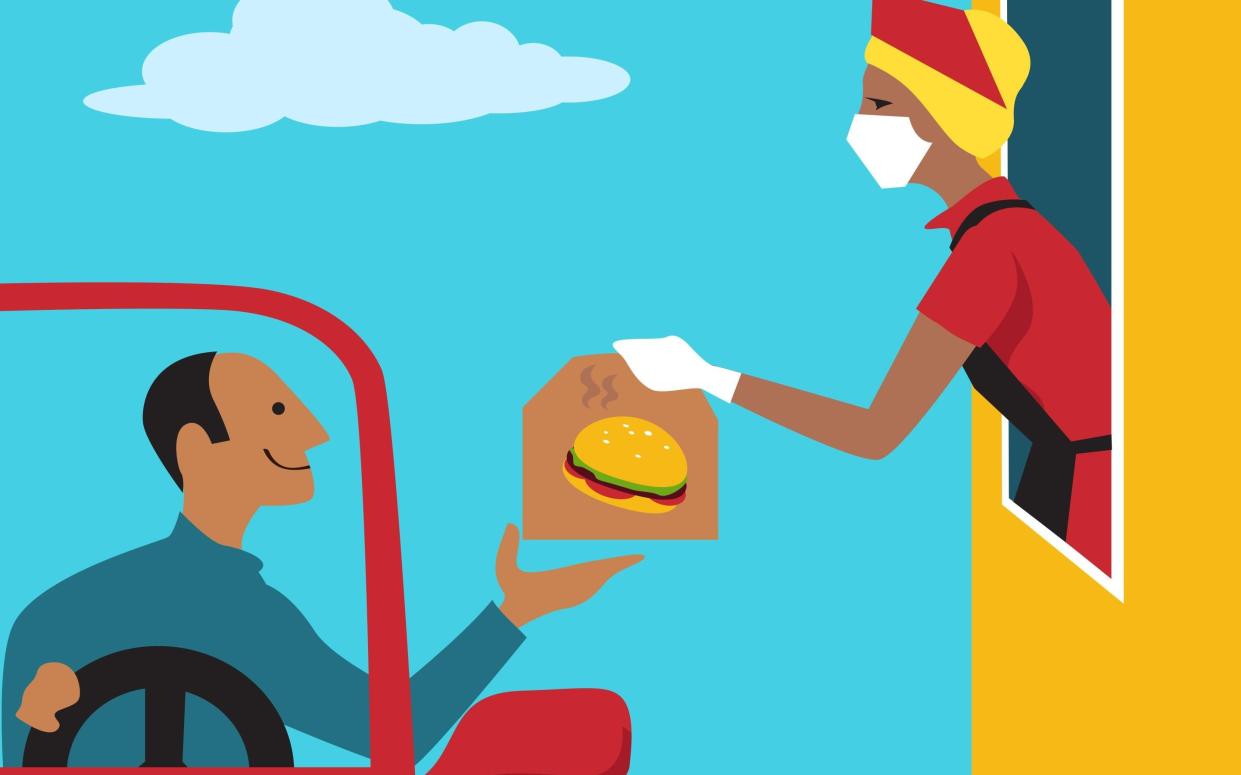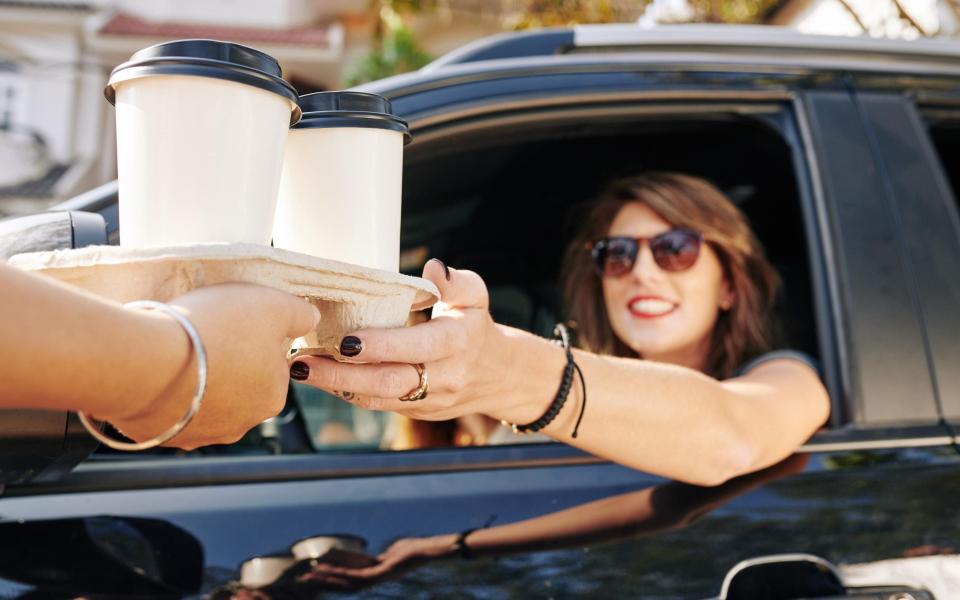How Britain became a drive-through nation

The pandemic has had a monumental impact on the hospitality industry in so many ways, but one of the biggest, and perhaps longest lasting, could be the resurgence of a North American import. For, as the ideal socially distanced dining out option, drive-throughs are on the rise.
The first such restaurant in the UK opened in the 1980s when a McDonald’s ‘drive-thru’ opened in Manchester: perceived as a “wacky idea” by customers. The concept was slow to take off, unlike across the pond, where drive-through remains more popular than home delivery (about 57 per cent of customers at US hamburger joints use the drive-through window, while McDonald’s generates 65 per cent of its sales in the United States from drive-through customers).
Yet, even before the pandemic, the number of British establishments offering drive-through service was growing – and the past 18 months has seen another surge.
According to the real estate consultancy P-Three, demand for drive-through sites has jumped by 25 per cent since Covid. Fast-food chains are expected to open around 200 new drive-through locations this year, if not more, and the market researcher NPD revealed that visits made to existing sites in the year to April 2021 were up by 40 million.
There are now around 2,500 drive-throughs across the UK and counting. Offering contact-free service, it’s easy to see why they have had a profitable pandemic. It’s good news for operators, too, as average spend per head tends to be higher than at dine-in branches and fewer staff are required.

The traditional big players – McDonald’s (which has 938 drive-through branches in the UK), Burger King (with 188) – now face competition from newcomers from North America such as Tim Hortons, which specialises in coffee and doughnuts, and burger purveyors Wendy’s, as well as established British chains including Leon. With the high street in decline, operators are increasingly looking to suburban and out-of-town drive-through sites. According to This Is Money, chains are in a ‘bunfight’ for new locations, with sites going for £200,000 a pop.
Tim Hortons is a beloved Candian chain that was brought to the UK in 2017. Currently, half of its 30 sites operate a drive-through system and are doing especially well, says Kevin Hydes, the chain’s chief commercial officer in the UK. They tend to be out of town, positioned on major roads, in retail destinations or attached to supermarkets – where drive-through is typically present in the UK. “We’ve seen significant growth in drive-through lanes, and as [pandemic] restrictions have eased, that growth has remained,” says Hydes.
The chain has a bold aim to dominate the UK drive-through scene with a site in every city and town in the UK by the end of 2022; eight are already planned this year.
The drive-through market may be dominated by fast-food chains, but independent restaurants are slowly entering the arena. West London’s Cue Point, an Afghan-inspired barbecue joint founded in 2016, decided to make a serious go of drive-through in April this year. The decision, co-founder Mursal Saiq admits, was born of uncertainty.
“Like everyone else getting ready to relaunch, it came from fear,” says Saiq. “What the hell is going to happen? Are people coming out? Are they not?” From the Chiswick restaurant’s car park customers can preorder barbecue meals featuring the likes of 16-hour smoked brisket, buffalo wings and lamb barbecoa, wait for it to be cooked on site, before driving off to eat at their chosen location. The average order is higher in value than for dine-in, says Saiq.
A third of orders are now via drive-through, and Saiq cannot see the business turning back, especially with the threat of future pandemics or lockdowns – drive-through offers a valuable alternative income stream. “Drive-through was a bit of a life saver,” he admits. “At the moment, though we have a huge capacity, it’s still unpredictable [for dine in].”
Saiq sees drive-through taking off across the country, though obviously only restaurants with sufficient space will be able to partake. Traditional high streets are not an option. Cue Point is helped by its large car park at the Chiswick Pavilion Cricket Club. So successful has the endeavour been that the team are building a specialised kitchen with a hatch, so drivers can be handed food right beside where it was cooked.
There are some concerns surrounding the trend, however. Amidst Britain’s obesity crisis, critics argue that it encourages more unhealthy eating and less exercise. There are environmental implications, too, of encouraging more people to drive. Hydes acknowledges these, but insists the majority of Tim Hortons sites are within walking distance of a residential community (and customers can choose to dine-in if they wish), have good public transport links, and encourage cycling with cycle storage on site.
While it may never reach the cultural ubiquity it has achieved in North America, there is no doubt the pandemic has turbocharged the concept. For better or worse, drive-through is here to stay.

